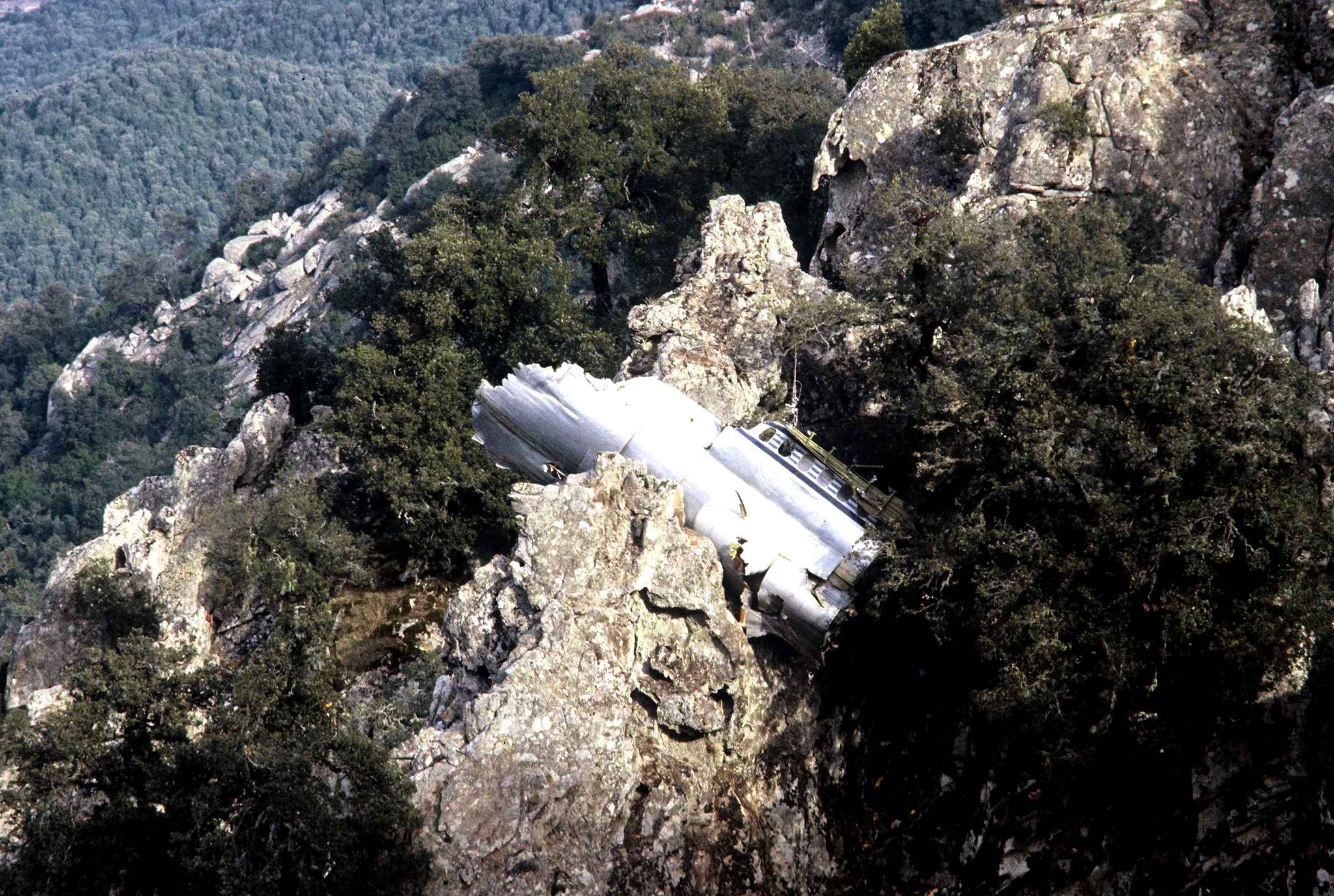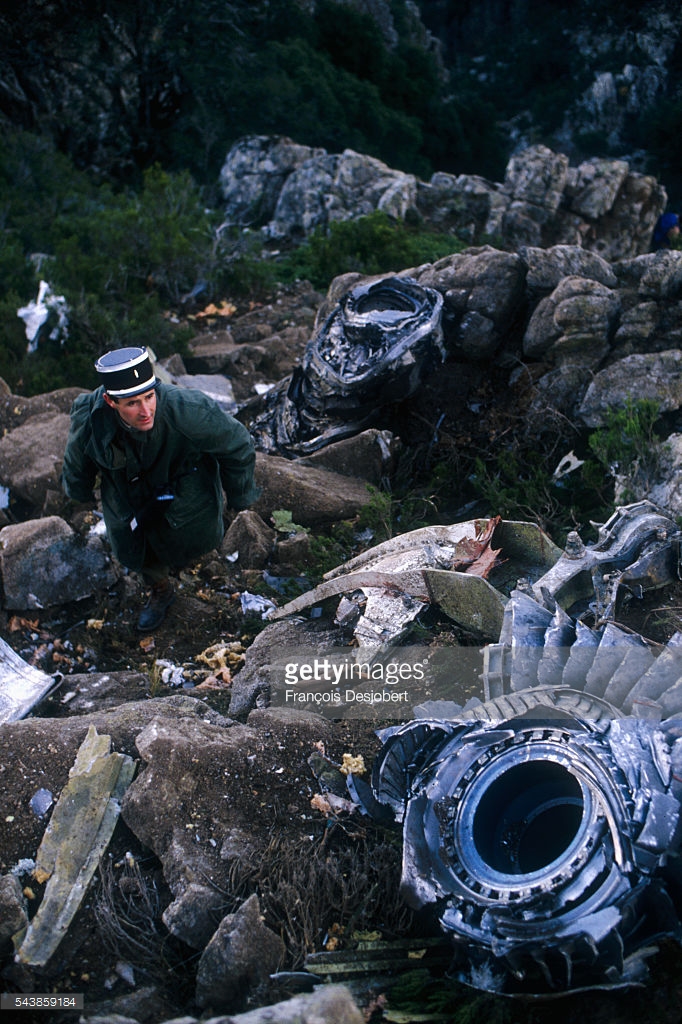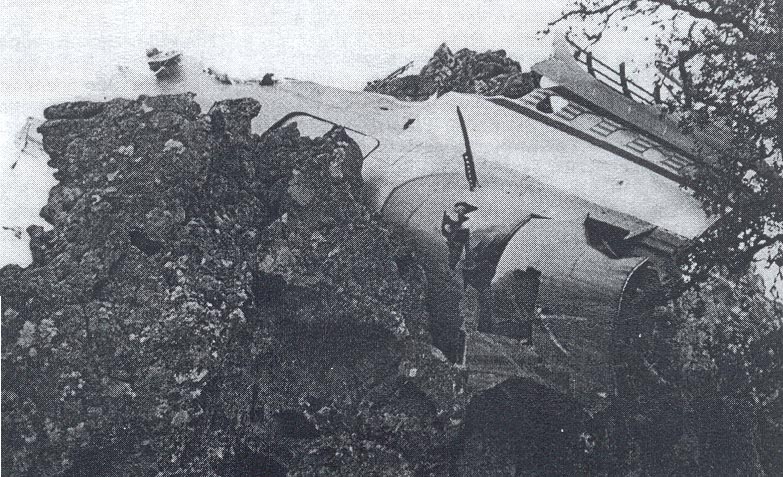Country
Crash of a McDonnell Douglas MD-82 in Ürümqi: 12 killed
Date & Time:
Nov 13, 1993 at 1456 LT
Registration:
B-2141
Survivors:
Yes
Schedule:
Shenyang – Beijing – Ürümqi
MSN:
49849
YOM:
1990
Flight number:
UJ6901
Crew on board:
10
Crew fatalities:
Pax on board:
92
Pax fatalities:
Other fatalities:
Total fatalities:
12
Circumstances:
The approach to Ürümqi-Diwopu was completed in limited visibility due to foggy conditions. On short final, the aircraft descended below the glide and struck a concrete wall located 3 km short of runway 25. It gain height and collided with power lines before crashing in a field, bursting into flames. Twelve occupants were killed, among them four crew members. The aircraft was destroyed by a post crash fire.
Probable cause:
The automatic pilot system disconnect on final approach for unknown reasons, causing the aircraft to adopt a rate of descent of 800 feet per minute until the aircraft struck a concrete wall and crashed.
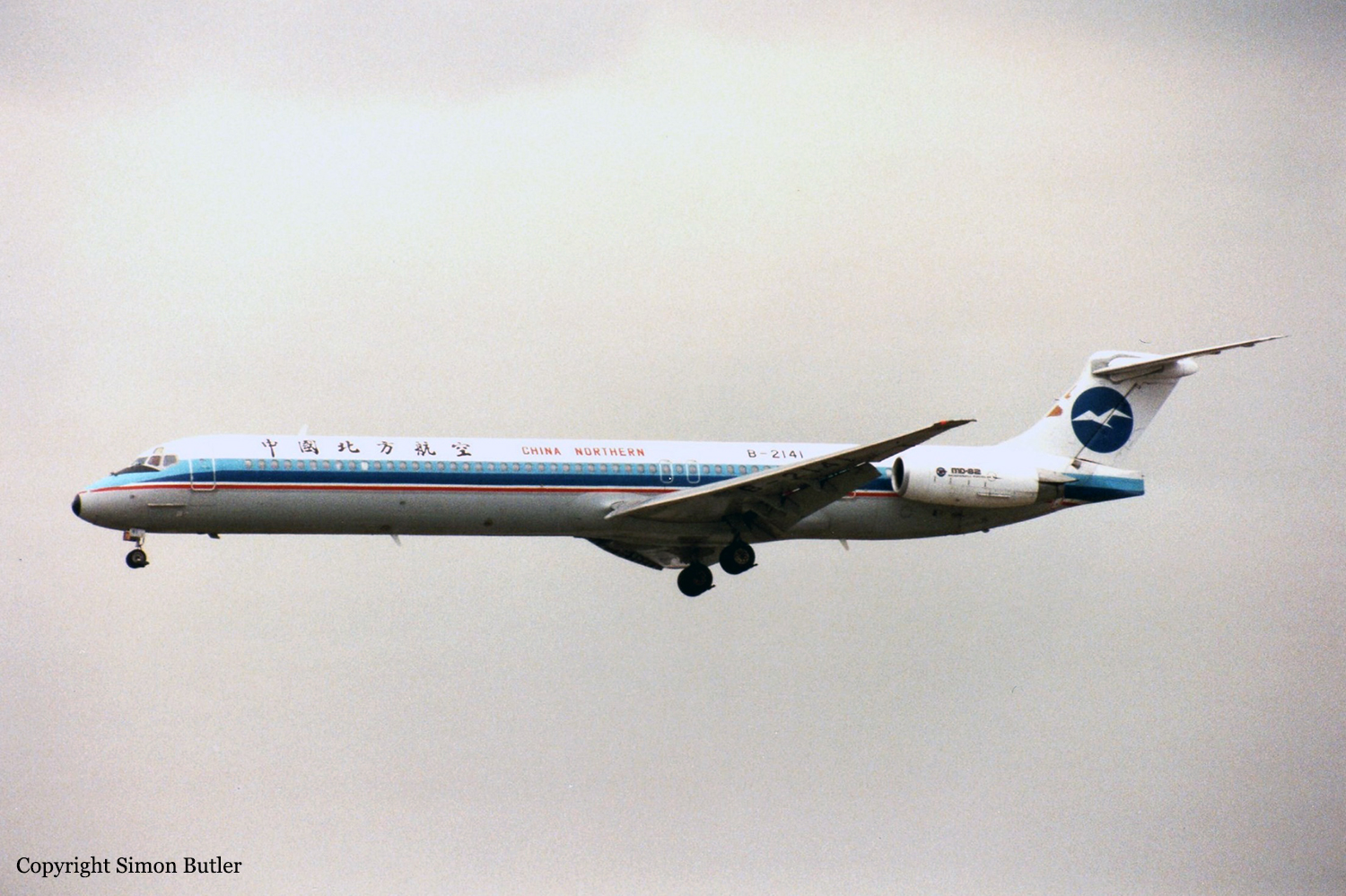
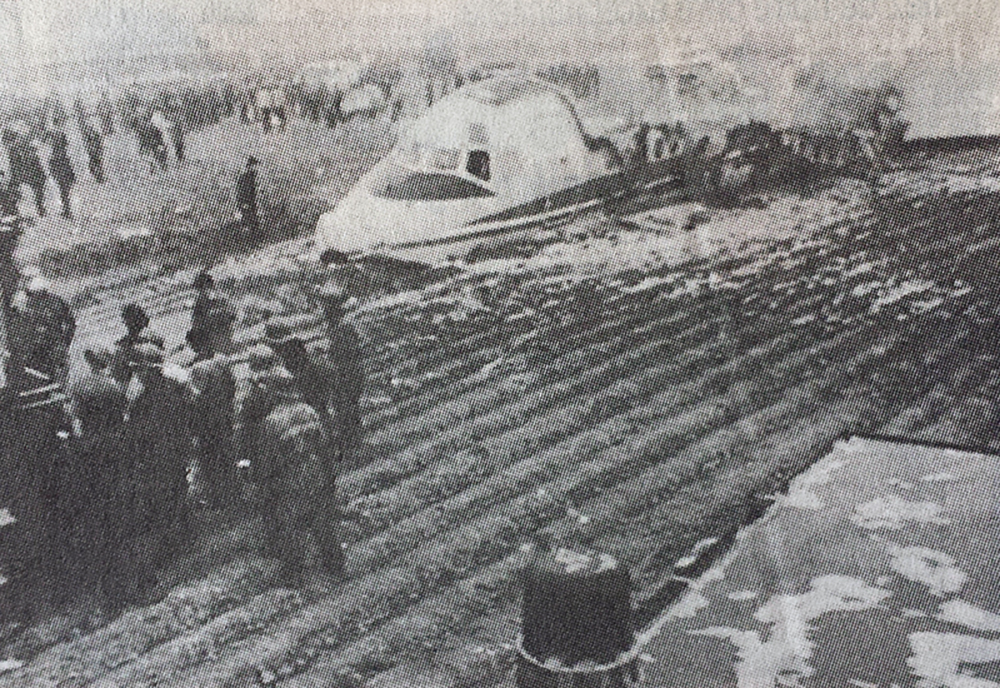
Crash of a McDonnell Douglas MD-82 in Fuzhou: 2 killed
Date & Time:
Oct 26, 1993 at 1304 LT
Registration:
B-2103
Survivors:
Yes
Schedule:
Shenzhen - Fuzhou
MSN:
49355
YOM:
1985
Flight number:
MU5398
Crew on board:
9
Crew fatalities:
Pax on board:
71
Pax fatalities:
Other fatalities:
Total fatalities:
2
Circumstances:
The descent to Fuzhou Airport was completed in poor weather conditions with limited visibility due to heavy rain falls. On short final, the aircraft was too high and about 350 metres to the right of the extended centerline. The captain realized he could not land in such conditions so, at a height of 20 metres, he decided to initiate a go-around procedure, increased engine power and retracted the flaps. The aircraft continued to descend so the crew finally decided to land. The aircraft touched down 1,983 metres past the runway threshold. On a wet runway surface, it was unable to stop within the remaining distance, overran, lost its undercarriage and came to rest in a swamp located 385 metres past the runway end, broken in three. Two passengers were killed while 25 others were injured.
Probable cause:
Wrong approach configuration on part of the flying crew. The braking coefficient was reduced because the runway surface was wet. The crew failed to initiate a go-around procedure earlier.
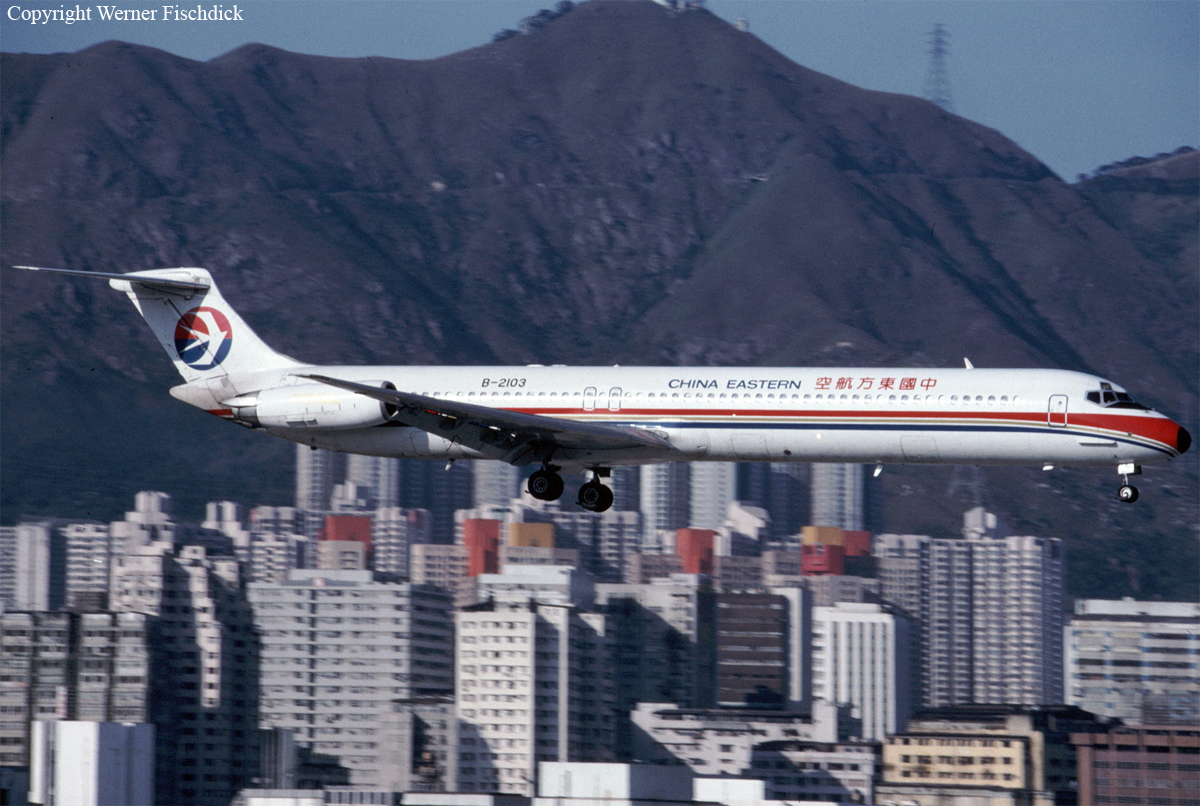
Crash of a McDonnell Douglas MD-82 in Kaohsiung
Date & Time:
Oct 25, 1993 at 1159 LT
Registration:
B-28003
Survivors:
Yes
Schedule:
Kaohsiung - Taipei
MSN:
53065
YOM:
1991
Flight number:
FE118
Crew on board:
8
Crew fatalities:
Pax on board:
152
Pax fatalities:
Other fatalities:
Total fatalities:
0
Circumstances:
After takeoff from Kaohsiung-Hsiao Kang Airport, while climbing to a height of 600 feet, the left engine failed. The crew declared an emergency and was cleared to return. On approach, the aircraft was unstable and too high on the glide. It landed too far down the runway, about 4,000 feet past the runway threshold. Unable to stop within the remaining distance, the aircraft overran, collided with a drainage ditch, lost its undercarriage and eventually came to rest against a concrete wall. All 160 occupants were evacuated, among them four passengers were slightly injured.
Probable cause:
The fan cowl on the left engine separated during initial climb.
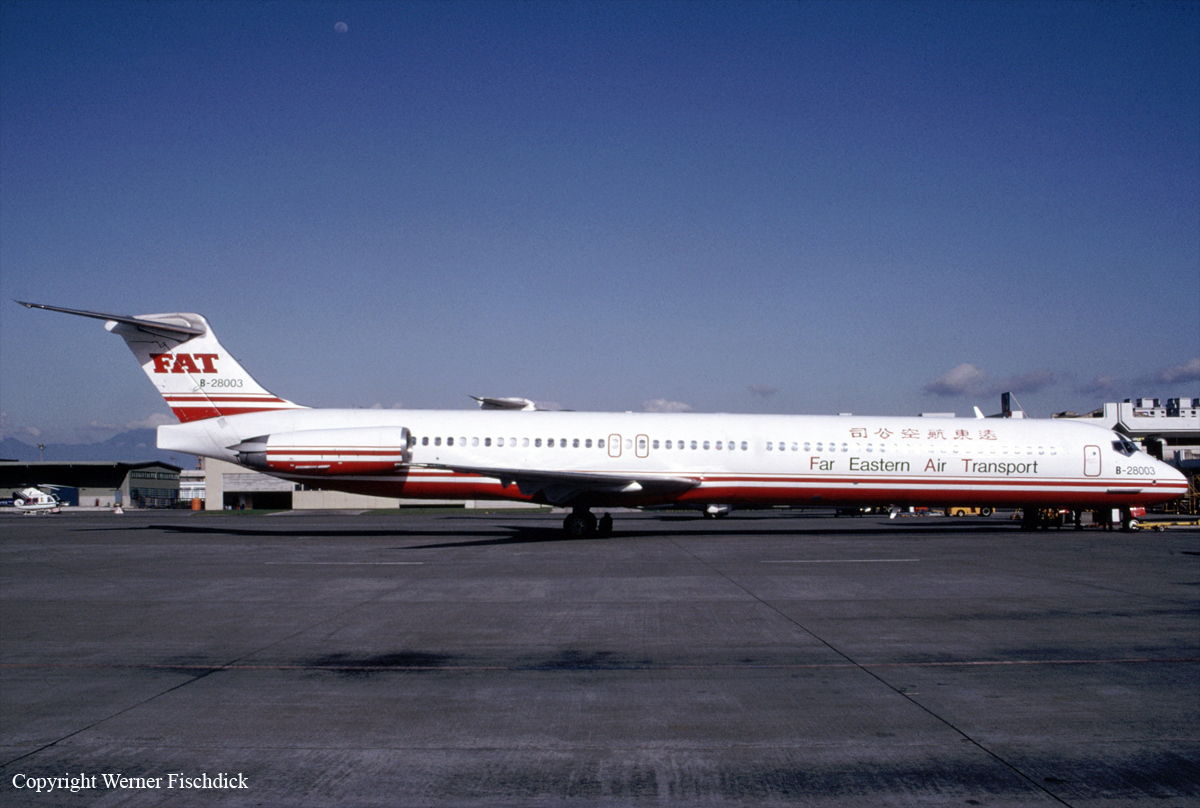
Crash of a McDonnell Douglas MD-82 in Detroit: 156 killed
Date & Time:
Aug 16, 1987 at 2045 LT
Registration:
N312RC
Survivors:
Yes
Schedule:
Saginaw - Detroit - Phoenix - Santa Ana
MSN:
48090
YOM:
1981
Flight number:
NW255
Crew on board:
6
Crew fatalities:
Pax on board:
149
Pax fatalities:
Other fatalities:
Total fatalities:
156
Captain / Total hours on type:
1359.00
Copilot / Total hours on type:
1604
Aircraft flight hours:
14928
Circumstances:
A McDonnell Douglas DC-9-82 operating Northwest Airlines flight 255 was destroyed when it crashed onto a road during takeoff from Detroit-Metropolitan Wayne County Airport, Michigan, USA. Just one of the 155 occupants survived the accident. Additionally, Two persons on the ground were killed. Flight NW255 was a regularly scheduled passenger flight between Saginaw, Michigan and Santa Ana, California, with en route stops at Detroit and Phoenix, Arizona. About 18:53, flight 255 departed Saginaw and about 19:42 arrived at its gate at Detroit. About 20:32, flight 255 departed the gate with 149 passengers and 6 crewmembers on board. During the pushback, the flightcrew accomplished the BEFORE (engine) START portion of the airplane checklist, and, at 20:33, they began starting the engines. The flight was then cleared to "taxi via the ramp, hold short of (taxiway) delta and expect runway three center [3C] (for takeoff)..." The ground controller amended the clearance, stating that the flight had to exit the ramp at taxiway Charlie. The crew was requested to change radio frequencies. The first officer repeated the taxi clearance, but he did not repeat the new radio frequency nor did he tune the radio to the new frequency. At 20:37, the captain asked the first officer if they could use runway 3C for takeoff as they had initially expected 21L or 21R. After consulting the Runway Takeoff Weight Chart Manual, the first officer told the captain runway 3C could be used for takeoff. During the taxi out, the captain missed the turnoff at taxiway C. When the first officer contacted ground control, the ground controller redirected them to taxi to runway 3C and again requested that they change radio frequencies. The first officer repeated the new frequency, changed over, and contacted the east ground controller. The east ground controller gave the flight a new taxi route to runway 3C, told them that windshear alerts were in effect, and that the altimeter setting was 29.85 inHg. The flightcrew acknowledged receipt of the information. At 20:42, the local controller cleared flight 255 to taxi into position on runway 3C and to hold. He told the flight there would be a 3-minute delay in order to get the required "in-trail separation behind traffic just departing." At 20:44:04, flight 255 was cleared for takeoff. Engine power began increasing at 20:44:21. The flightcrew could not engage the autothrottle system at first, but, at 20:44:38, they did engage the system, and the first officer called 100 knots at 20:44:45. At 20:44:57, the first officer called "Rotate." Eight seconds later, the stall warning stick shaker activated, accompanied by voice warnings of the supplemental stall recognition system (SSRS). The takeoff warning system indicating that the airplane was not configured properly for takeoff, did not sound at any time prior or during takeoff. After flight 255 became airborne it began rolling to the left and right before the left wing hit a light pole in a rental car lot. After impacting the light pole, flight 255 continued to roll to the left, continued across the car lot, struck a light pole in a second rental car lot, and struck the side wall of the roof of the auto rental facility in the second rental car lot. The airplane continued rolling to the left when it impacted the ground on a road outside the airport boundary. The airplane continued to slide along the road, struck a railroad embankment, and disintegrated as it slid along the ground. Fires erupted in airplane components scattered along the wreckage path. Three occupied vehicles on the road and numerous vacant vehicles in the auto rental parking lot along the airplane's path were destroyed by impact forces and or fire. One passenger, a 4-year-old child was injured seriously.
Probable cause:
The flight crew's failure to use the taxi checklist to ensure that the flaps and slats were extended for take-off. Contributing the accident was the absence of electrical power to the airplane take-off warning system which thus did not warn the flight crew that the airplane was not configured properly for take-off. The reason for the absence of electrical power could not be determined.
Final Report:


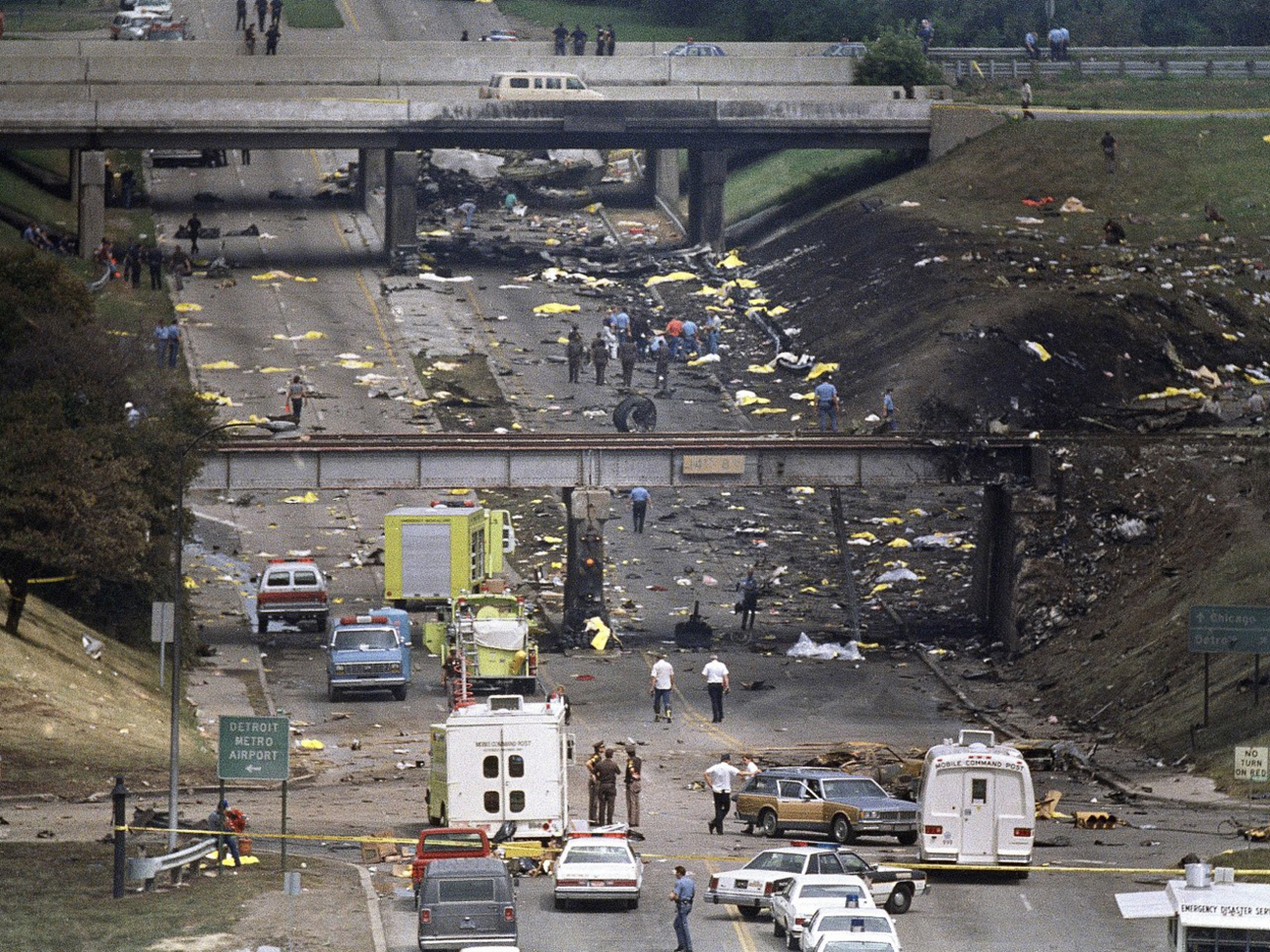
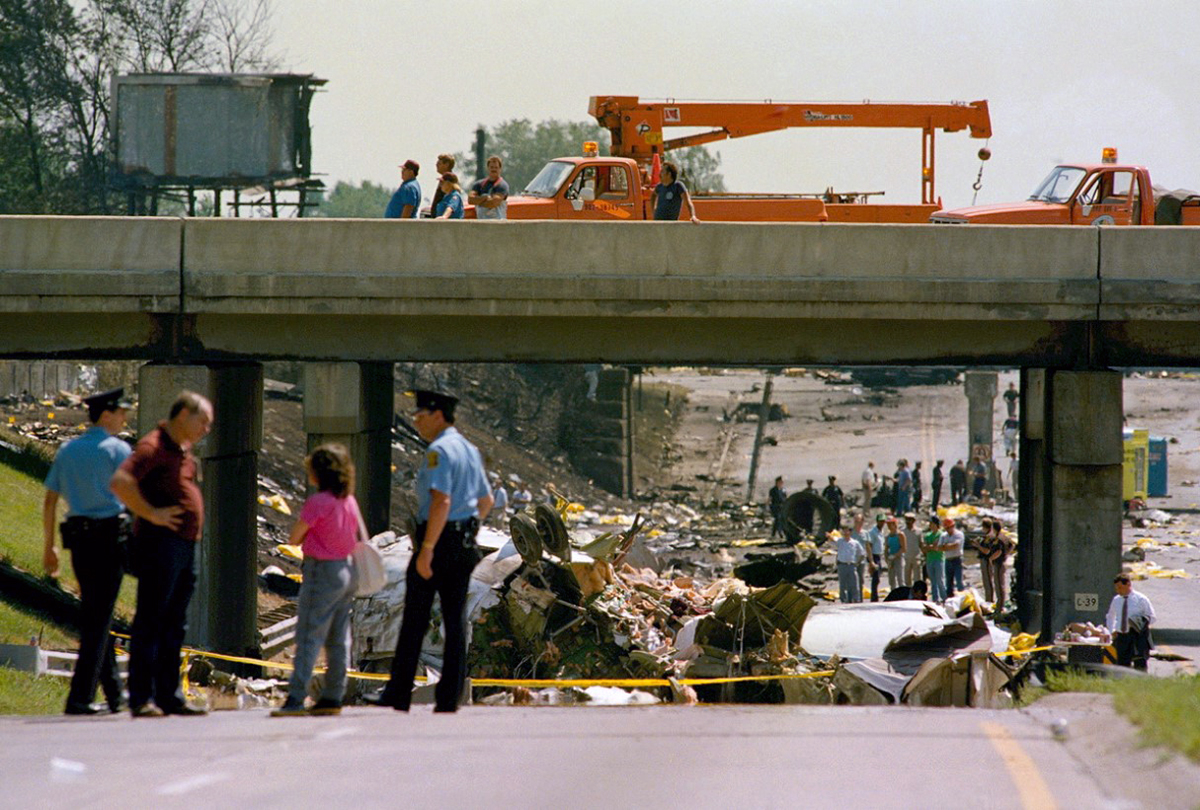
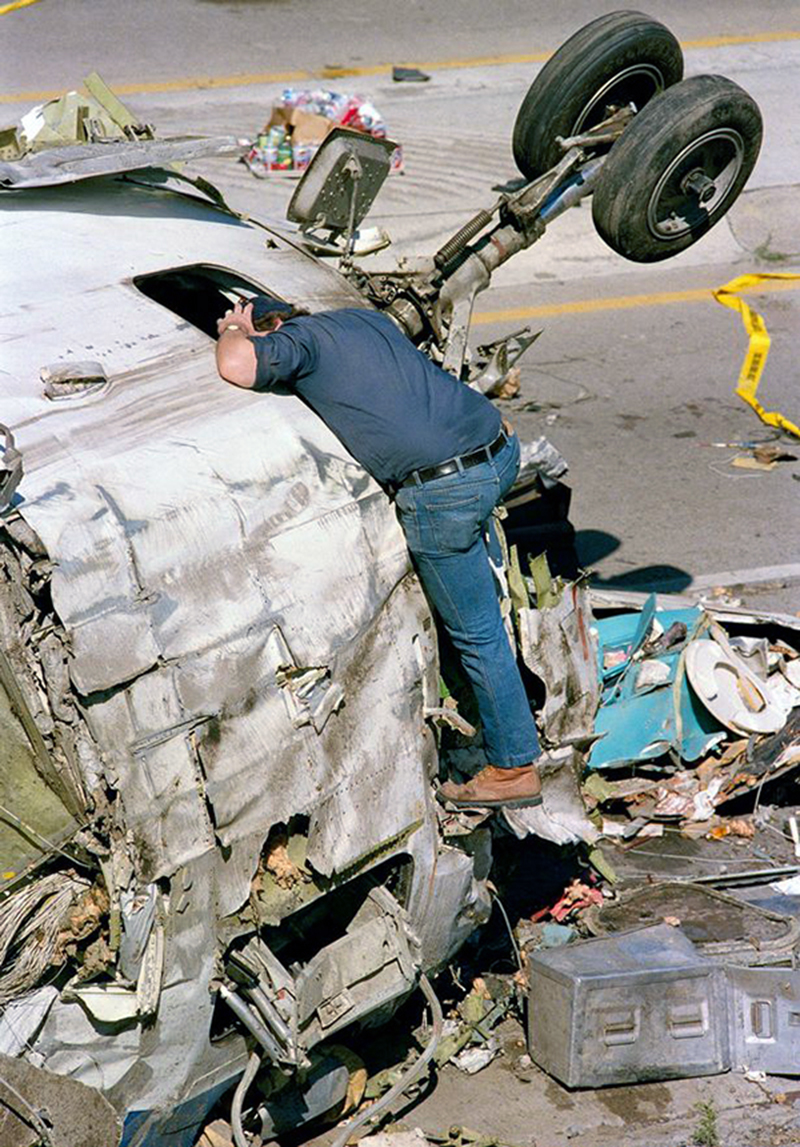
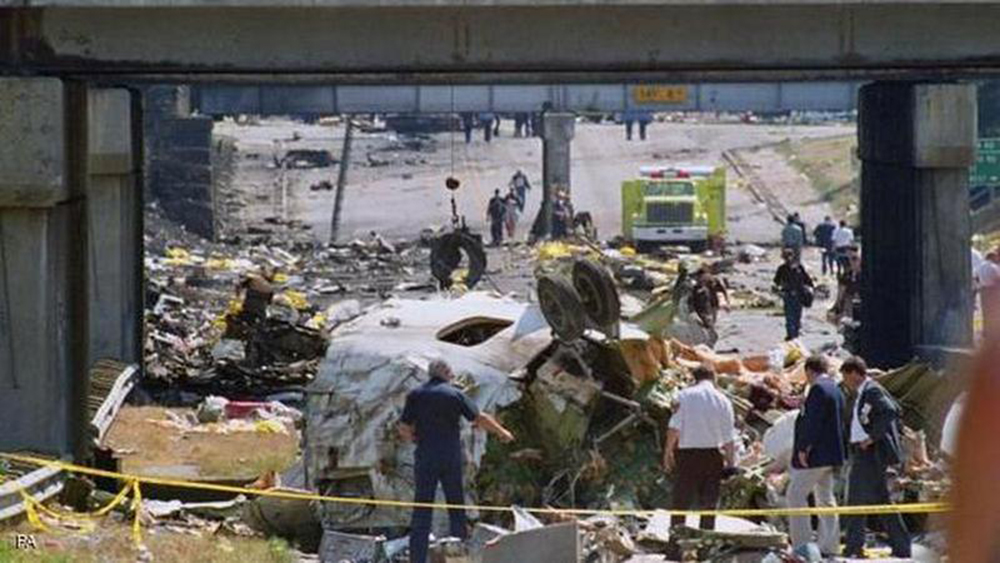

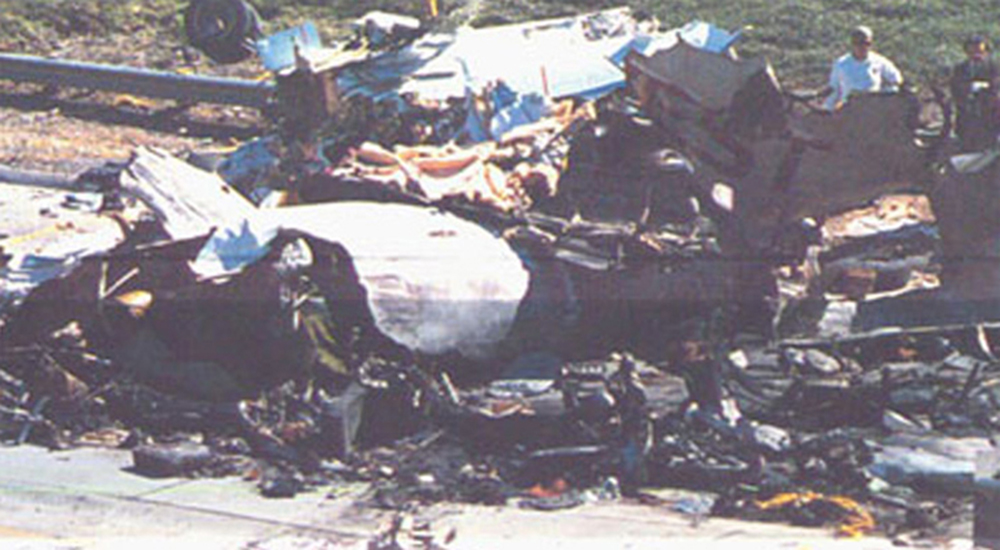

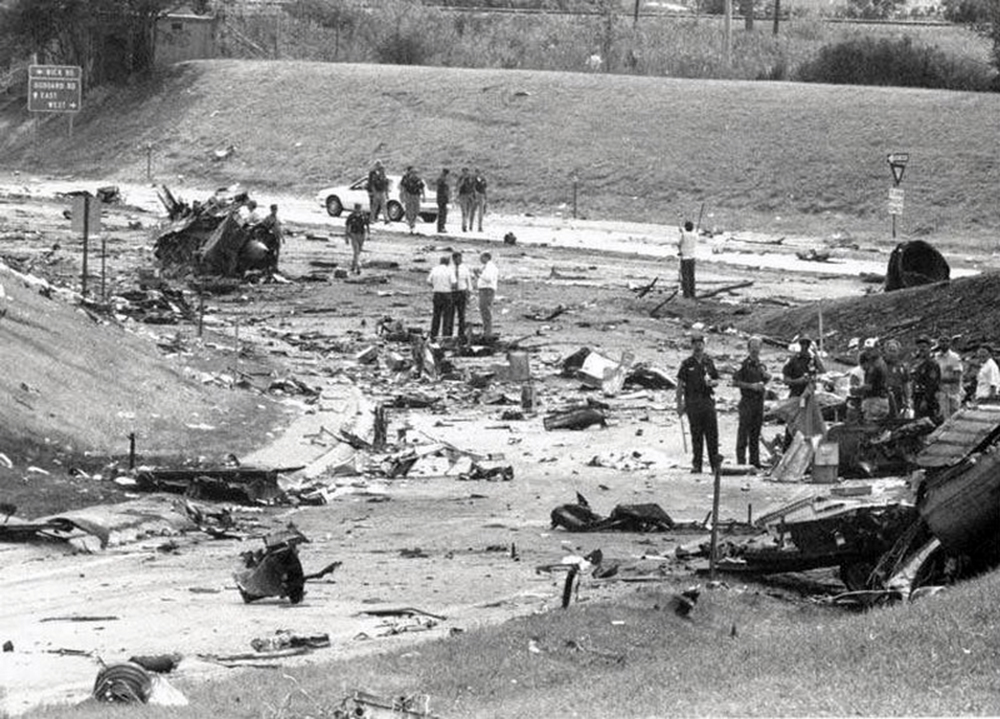
Crash of a McDonnell Douglas MD-82 on Mt San Pietro: 180 killed
Date & Time:
Dec 1, 1981 at 0853 LT
Registration:
YU-ANA
Survivors:
No
Schedule:
Ljubljana - Ajaccio
MSN:
48047/998
YOM:
1981
Flight number:
JP1308
Crew on board:
8
Crew fatalities:
Pax on board:
172
Pax fatalities:
Other fatalities:
Total fatalities:
180
Captain / Total hours on type:
188.00
Copilot / Total hours on type:
288
Aircraft flight hours:
683
Circumstances:
The McDonnell Douglas MD-82 departed Ljubljana at 0741LT on a charter flight to Ajaccio, carrying 173 passengers and a crew of seven. Following an uneventful flight at FL330, the crew descended at FL190 at 0835LT then the copilot's son entered the cockpit and was allowed to take the observer's seat. Further descent instructions and radar vectors were obtained and at 08:47 the flight transferred to the Ajaccio Approach controller. The controller cleared the flight to the AJO VOR at FL110 and to report when overhead the VOR. He also passed on weather information and the reported that runway 21 was the runway in use. At 0849LT the crew reported over the AJO VOR. The controller cleared the flight to descend to 3,300 feet on the 247 radial of the AJO VOR. Three minutes later the flight radioed: "Rolling inbound out of six thousand". By that time the airplane had descended below the minimum holding altitude of 6,800 feet for that area. He then reported: "Turning inbound to Ajaccio because at the moment we are in cloud." The controller then replied: "Roger, 1308, report Charlie Tango on final, surface wind two eight zero degrees, twenty knots." There was no response from flight 1308. Flight 1308 was flying a holding pattern to lose altitude, but the controller believed the aircraft was going to make a direct descent to begin the final approach. Hence the reference to the Charlie Tango (CT) NDB beacon. The GPWS warning sounded in the cockpit and the crew increased engine power to gain altitude. 13 seconds later, at a speed of 285 knots, the left wing struck the Punta di Junca and was partially torn off. The aircraft rolled to the left and crashed seven seconds later in steep cliffs located 700 meters below, about 32 km southeast of Ajaccio-Campo dell’Oro Airport. The aircraft was totally destroyed and all 180 occupants were killed.
Probable cause:
The Committee considers that the cause of this accident was that the descent undertaken by the crew led the aircraft to find itself in clouds below the instruments safety altitude for that part of the flight path. The Committee noted that when the crew, alerted by the GPWS, tried to regain altitude, the maneuver proved to be insufficient to overcome the effect of strong descending air currents due to relief and strong wind, present in the area where the aircraft was flying at that time. The following contributing factors were reported:
- The committee felt that the crew did not show the necessary rigor when preparing its approach. It does not appear that a logical order has guided the crew in the revision and memorization of various parameters, including the safe altitude and the maximum speed of the holding circuit, which in any case, did not catch the attention of the crew in an appropriate manner. In addition, the presence of a young child on the observer seat cockpit, until the end of the flight was a dispersion factor of attention;
- The misunderstandings which have developed in the exchange of messages between the captain and the approach controller could disrupt, at certain times, the working conditions of the crew. The controller consequently did not have an accurate representation of the progress of the aircraft in the performance of its procedure and, therefore, did not intervene when two messages "call you inbound on radial two forty seven", and then "rolling inbound out of six thousand" would have told him, if he had better interpreted them, an ambiguous situation for the first and abnormal and dangerous for the second;
- The advice to the commission on vectoring habits and on habits supposedly used by some national air traffic services to systematically take into account the safety altitudes in formulating control permissions, leads to the suspicion that some crew have a slightest concern about the safe altitudes;
- Airspeed of the aircraft was greater than the maximum speed of the holding pattern and crew did not adopt the correction factors adapted to altitude wind they had encountered during the previous segment th flight. This led to the airplane overfly an area where, although it is included in the protected area of the holding pattern, the upper air movements were particularly important;
- The symbolic representation of the holding pattern on the approach chart used by the crew corresponds to a path, with no wind, and an aircraft which would have approximately 150 knots indicated airspeed. It calls not evident attention to Airmen on the actual dimensions of the actually travelled circuits in flight, nor therefore on altitude over the terrain reliefs.
- The committee felt that the crew did not show the necessary rigor when preparing its approach. It does not appear that a logical order has guided the crew in the revision and memorization of various parameters, including the safe altitude and the maximum speed of the holding circuit, which in any case, did not catch the attention of the crew in an appropriate manner. In addition, the presence of a young child on the observer seat cockpit, until the end of the flight was a dispersion factor of attention;
- The misunderstandings which have developed in the exchange of messages between the captain and the approach controller could disrupt, at certain times, the working conditions of the crew. The controller consequently did not have an accurate representation of the progress of the aircraft in the performance of its procedure and, therefore, did not intervene when two messages "call you inbound on radial two forty seven", and then "rolling inbound out of six thousand" would have told him, if he had better interpreted them, an ambiguous situation for the first and abnormal and dangerous for the second;
- The advice to the commission on vectoring habits and on habits supposedly used by some national air traffic services to systematically take into account the safety altitudes in formulating control permissions, leads to the suspicion that some crew have a slightest concern about the safe altitudes;
- Airspeed of the aircraft was greater than the maximum speed of the holding pattern and crew did not adopt the correction factors adapted to altitude wind they had encountered during the previous segment th flight. This led to the airplane overfly an area where, although it is included in the protected area of the holding pattern, the upper air movements were particularly important;
- The symbolic representation of the holding pattern on the approach chart used by the crew corresponds to a path, with no wind, and an aircraft which would have approximately 150 knots indicated airspeed. It calls not evident attention to Airmen on the actual dimensions of the actually travelled circuits in flight, nor therefore on altitude over the terrain reliefs.
Final Report:

